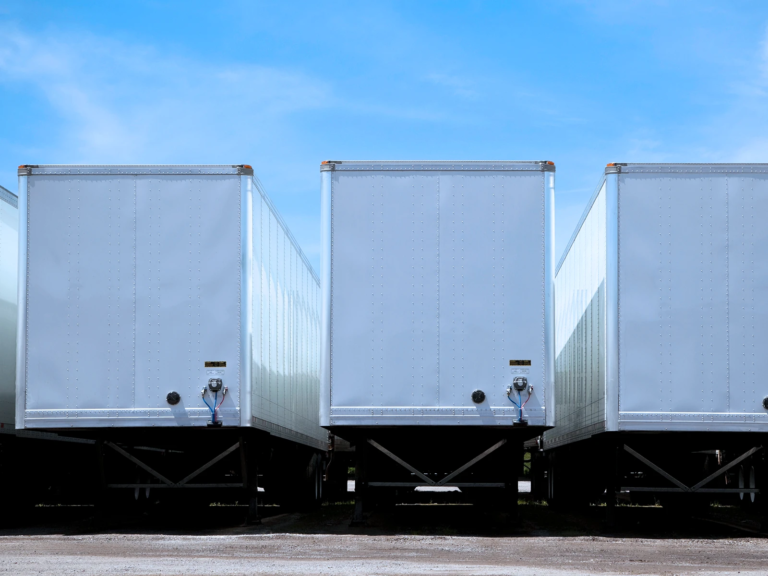Key Takeaways
- Full truckload (FTL) shipping involves shipping a large quantity of freight that fills an entire truck, offering a more direct and efficient delivery process compared to less than truckload (LTL) shipping.
- FTL shipping provides advantages such as faster delivery times, increased security, cost savings for large and consistent freight volumes, a large market of carriers for better pricing and service, and improved technology and connectivity.
- When utilizing FTL shipping, freight brokers can optimize efficiency by selecting the right carriers based on performance and reputation, leveraging technology like transportation management systems (TMS) for automation and real-time tracking, and building strong relationships with carriers through effective communication and excellent service.
What is Full Truckload Shipping?
Full truckload (FTL) shipping is a transportation method that involves shipping a large quantity of freight that is enough to fill an entire truck, hence the name ‘full truckload.’
In contrast to less than truckload (LTL) shipping, where multiple shipments or pallets from different customers are consolidated into a single truck, FTL shipping is dedicated to a single shipment, allowing for a more direct and efficient delivery process.
The size of the shipment required to qualify as FTL shipping can vary depending on the carrier and the region.
Generally, FTL shipments weigh over 10,000 pounds or take up more than half the capacity of a standard trailer. FTL shipments are commonly used for businesses that have large and consistent amounts of freight to transport, such as manufacturers and distributors.
Why Do Freight Brokers Choose Truckload Shipping?
FTL shipping has several advantages over other shipping methods.
Shipment Speed: One of the primary benefits is the speed of the shipment. Since the truck is dedicated to a single shipment, there is no need for additional stops or consolidations along the way to a destination, resulting in a faster delivery time. The driver can simply drive a direct route from origin to destination.
Increased Security: Another advantage of FTL shipping is increased security. Since the shipment is contained within a single truck, there is a lower risk of theft or damage during transit. Additionally, the freight brokers often have more control over the shipment since they can select ideal carriers to tender their load for better performance and tracking.
Cost Savings: FTL shipping is also more cost-effective for businesses that have large and consistent amounts of freight to transport. While FTL shipping may have a higher upfront cost compared to LTL or PTL (Partial Truckload) shipping, the per-unit cost decreases as the shipment size increases, similar to bulk discounts. This is because carriers can optimize the use of their resources and reduce the cost of transporting the freight. Furthermore, FTL shipping can also reduce the need for warehousing, since the shipment can be transported directly to its destination, reducing the time and overhead costs associated with storing the freight.
How to Get the Most Out of Truckload Shipping – Carrier Selection
When choosing an FTL carrier, there are several factors to consider. These factors will help improve your success within the freight and transportation industry.
Performance
One of the most important factors for performance is the carrier’s reputation for on-time delivery. This is especially important for businesses that rely on timely delivery for their operations. Additionally, businesses should consider the carrier’s experience in handling the type of freight they are shipping. For example, carriers with experience in transporting hazardous materials may be better suited for businesses that transport chemicals or other hazardous materials.
Carrier performance can be evaluated using transportation data & analytics. Using TMS software allows access to carrier statistics and performance metrics. This will provide users with insights on carrier lanes and regions, rates, volume, historical data, and other relevant information. The carrier’s safety record is also important since the safety of the shipment and the general public are at stake during transit.
Capabilities and Experience
Another consideration when choosing an FTL carrier is the carrier’s equipment and capacity. The carrier should have the appropriate equipment to handle the shipment, such as the right type of trailer for the freight being shipped.
The carrier should have enough capacity to handle the shipment in a timely manner. If the carrier is already at full capacity, there may be delays in delivery or additional charges for expedited service. Freight brokers & shippers benefit from utilizing a capacity sourcing platform to digitally match open loads to live capacity. Users can also visualize a carriers resume through historical lane data to identify the best-fit carrier for each job.
Pricing
Businesses should also consider the carrier’s pricing and payment terms. The carrier should provide a clear and detailed pricing structure that includes all fees associated with the shipment.
Additionally, businesses should consider the carrier’s payment terms and whether they are able to accommodate their payment schedule. Freight brokers can take advantage of a lane pricing module in order to better compare historical lane rates with current market prices. This allows for improved decision making in the carrier selection process.
Benefits of Full Truckload Shipping
There are several benefits to using FTL shipping for businesses with large and consistent amounts of freight to transport. Some of these benefits include:
Speed to Cost Ratio
Since the truck is dedicated to a single shipment, there is no need for additional stops or consolidations along the way, resulting in a faster delivery time.
FTL is the ideal ratio for most freight needs as it is the perfect balance between volume, cost, speed, and flexibility. Additionally, FTL shipments are less likely to experience delays since there is no need to wait for other shipments to be loaded or unloaded before moving on to the next destination.
Large Market of Carriers
FTL gives the ability to build your network of choice partners and carriers based on your organization’s needs.
With over 600,000 carriers registered with the FMCSA, the FTL industry benefits from a competitive carrier marketplace, which can drive down costs and result in better pricing for shippers and brokers. This means that brokers can offer more competitive rates to their customers, making them more attractive and potentially helping them to win more business.
This also leads to better service and improved flexibility as brokers can quickly and easily find a replacement carrier if a shipment falls through. With more carrier options, brokers can find carriers that are the best fit for each specific job, whether it’s based on price, equipment type, location, or other factors..
Improved Technology and Connectivity
In recent years, the FTL industry has undergone a digital transformation which has allowed for numerous competitive advantages within the industry. Through the development and adoption of new technologies organizations have access to better communication between brokers, shippers, and carriers, leading to greater transparency, efficiency, and cost savings.
One of the most significant advancements in this digital transformation is the use of cloud-based transportation management systems (TMS), which allow brokers to manage all aspects of their operations from a single platform. With a cloud-based TMS, brokers can improve
Best Practices – FTL Shipping for Freight Brokers
As a freight broker, confirm with your shippers and carriers are following these best practices when it comes to FTL freight preparation and packaging. As a shipper, ensure you are following the right standards in regulations when shipping for full truckload. Doing so will help carriers better transport freight and lower the risk of damage/theft as well.
Here are 3 tips freight brokers can take to improve their FTL efficiency:
- Optimize Carrier Selection: One of the most effective ways to improve FTL efficiency is to make sure you are selecting the right carrier at the right price. This involves identifying the most qualified carrier to reduce transportation costs, increase delivery speed, and improve customer satisfaction.
- Utilize Technology: Technology can be a powerful tool for improving FTL efficiency. Freight brokers can use transportation management systems (TMS) to automate many manual processes involved in FTL, such as carrier communication, dispatch, and tracking. Monitoring your shipment’s progress throughout its journey, using geofence alerts to stay informed about its location status, notify stakeholders, and estimate delivery time is essential. This allows brokers to make informed decisions and quickly address any issues that arise.
- Develop Strong Relationships with Carriers: Building strong relationships with carriers is crucial for FTL efficiency. Communication is key and provides value to all parties along the supply chain. Brokers who have a close working relationship with carriers can negotiate better rates, secure capacity more easily, and ensure that shipments are delivered on time and in good condition. Developing these relationships requires clear and open communication, prompt payment, and a commitment to providing excellent service to carriers.
Following these steps will help ensure that your full truckload shipments arrive safely and on time, helping to build strong relationships with carriers, business partners, and customers alike.
Challenges Associated with FTL Freight
- Capacity Constraints – Finding reliable capacity for FTL shipments can be challenging, especially during peak seasons or in regions with limited carrier availability.
- Cost – FTL shipping can be expensive for smaller companies, as they may not have the volume or negotiating power to secure favorable rates.
- Equipment Utilization – Ensuring that the truck is fully utilized can be a challenge, as shippers may not always have enough freight to fill an entire truckload.
- Capacity Planning – It can be difficult to plan and forecast FTL shipments accurately, especially for seasonal or volatile demand patterns, leading to underutilization or overbooking of capacity.
- Safety and Compliance – FTL carriers must comply with safety regulations, such as Hours of Service rules, and ensure that their trucks are properly maintained and inspected, which can add to the cost and complexity of FTL shipping.
Factors to Consider When Choosing an FTL Carrier
Not all carriers are created equal. When choosing an FTL carrier, there are several factors to consider, including:
Performance/Reputation: This is especially important for businesses that rely on timely delivery for their operations. Ensuring your freight arrives on schedule is essential for good business practice.
Safety Record: Does your carrier have a history of bad drivers? Consider the safety of your shipment as well as the motorists on the roadway. A carrier’s safety record is an important consideration.
Type of Freight: Carriers with experience in transporting hazardous materials may be better suited for businesses that transport chemicals or other hazardous materials.
Equipment and Capacity: The carrier should have the appropriate equipment to handle the shipment, such as the right type of trailer for the freight being shipped. Additionally, the carrier should have enough capacity to handle the shipment in a timely manner.
Pricing: The old saying ‘you get what you pay for’ still rings true. Low prices may be linked to poor service/carrier performance. Carriers will often provide a clear and detailed pricing structure that includes all fees associated with the shipment. Do your research before spending the money on a truckload.
FTL vs LTL Freight. How Do They Compare?
The primary difference can between full truckload (FTL) and less than truckload (LTL) freight ultimately comes down to the amount of space required to transport the shipment.
FTL freight requires enough freight to fill an entire truck, while LTL freight does not require a full truckload (usually in the form of pallets) and is typically consolidated with other shipments from different customers.
Which Is Best For My Business?
When deciding between FTL and LTL shipping, businesses should consider their shipment volume, transit time requirements, and budget.
While FTL shipping may offer faster transit times and increased security, it may not be cost-effective for businesses with smaller shipments. LTL shipping, on the other hand, may offer lower shipping rates but may result in longer transit times and additional handling. Ultimately, the choice between FTL and LTL shipping will depend on the unique needs and budget of each individual business.
How Much Does Full Truckload Shipping Cost?
FTL pricing can vary widely depending on factors such as the shipment size, distance, and the carrier used.
Obtaining quotes from FTL carriers is the best idea to get pricing related data for their specific shipments. This can be done utilizing a TMS software and lane rate feature which will provide historical data on carrier rates. This will help connect organizations with all the carriers and their pricing in a simple list.
It’s important to compare pricing from multiple carriers and to consider other factors such as the carrier’s reputation for on-time delivery, performance, safety record, and experience in handling the type of freight being shipped when choosing an FTL carrier.
Get in touch with an expert to get more information on FTL related pricing and costs.


